Analogue Living In A Digital World
المعيشة التقليدية اليدوية في العالم الرقمي
Tasmeem Doha, launched in 2004 and hosted by VCUQatar, is a biennial international art and design conference that attracts prominent speakers and artists from all over the world. Tasmeem is the Arabic word for ‘Design’. Tasmeem addresses contemporary topics on art and design, and brings together international designers, artists, academics, students and industry professionals. Over the years, the ambitious and timely themes of Tasmeem have gained widespread attention and praise, while fostering partnerships that enhance the educational, creative and cultural vitality of Qatar and beyond.
تقوم جامعة فرجينيا كومنولث في قطر ومنذ عام 2004 باستضافة مؤتمر تصميم دوحة، هو مؤتمر دولي في الفن والتصميم يعقد مرة كل عامين ويستقطب العديد من المتحدثين والفنانين البارزين من جميع أنحاء العالم. يتناول المؤتمر موضوعات معاصرة في الفن والتصميم، ويجمع العديد من المصممين العالميين والفنانين والأكاديميين والطلاب والمتخصصين في هذا القطاع. اكتسبت المواضيع الشيقة التي تناولها المؤتمر، على مر السنين، الاهتمام والثناء على نطاق واسع، وعمل المؤتمر على رعاية الشراكات التي تعزز حيوية العملية التعليمية والإبداعية والثقافية في قطر والمنطقة.
Analogue Living in a Digital World aims to dialog with art and design’s leading thinkers, educators and practitioners whose ideas transcend media and speak to our human existence in a technological society. The intent of this conference is to explore the intersection between the analogue and digital within the context of our lived experience, and to examine where the two modes differ, intertwine, and coexist. By looking at past and present art and design methodologies and practices, we endeavor to create a context for examining the relevance of our current attitudes to discover new ways to grow and evolve.
يهدف تصميم دوحة 2017 ـ المعيشة التقليدية اليدوية في العالم الرقمي ـ إلى تبادل الحوار بين كبار المفكرين والمعلمين والممارسين في الفن والتصميم والتي تجاوزت أفكارهم وسائل الإعلام وتتحدث للوجود الإنساني في المجتمع التكنولوجي. القصد من هذا المؤتمر هو استكشاف نقاط الالتقاء بين الطرق التقليدية اليدوية، والرقمية، في سياق التجربة التي نعيشها، ودراسة نقاط الاختلاف، التداخل، والتعايش. وبالنظر في منهجيات وممارسات الفن والتصميم السابقة والحالية، نسعى لابتكار سياق لدراسة جدوى الاتجاهات الحالية لدينا واكتشاف طرق جديدة للنمو والتطور.
We are experiencing a paradigm shift, as aspects of our lives that were formally analogue become digitized. This radical change impacts how we define ourselves as individuals, and as creative beings. It challenges our institutional foundations, and our roles in society. The gradual evolution of the last several decades is steady and unrelenting, and the ramifications of this transformation have just begun to be revealed and interrogated.
نحن نشهد نقلة نوعية، حيث تحولت جوانب حياتنا التقليدية إلى رقمية. هذه التغيرات الجوهرية تؤثر على تعريفنا لأنفسنا كأفراد، وككائنات إبداعية. فهي تتحدى قوام مؤسساتنا، ودورنا في المجتمع. التطور التدريجي للعقود الماضية ثابت وصارم، وقد بدأنا لتونا في الكشف عن تداعيات هذا التحول والتحقيق فيها.
Registration: Tasmeem 2017
Wednesday15/03/2017
8:30Registration
Saffron Hall
9–9:15Tasmeem Kickoff
Atrium
9:15–10:30Workshops Presentation
Atrium
10:30–11:00Coffee Break
Saffron Hall
Workshop exploration begins
11–12:00Speaker: Hasan Elahi
Atrium
12–13:00Speaker: Foundland
Atrium
13–14:00Lunch
Saffron Hall
13:30–15:00RVArts Majlis Conversations
Saffron Hall
15–16:00Speaker: Hisham Fageeh
Atrium
16–17:00Speaker: Marquise Stillwell
Atrium
17–18:00Speaker: Anouk Wipprecht
Atrium
18–19:00Faculty Exhibition Opening
VCUQatar Gallery
Student Exhibition Opening
Orange Hall
الأربعاء15/03/2017
8:30التسجيل
قاعة الزعفران
9–9:15انطلاق المؤتمر
قاعة الاحتفالات
9:15–10:30استعراض ورش العمل
قاعة الاحتفالات
10:30–11:00استراحة
قاعة الزعفران
11–12:00محاضرة: حسن إلاهي
قاعة الاحتفالات
12–13:00محاضرة: فاوندلند
قاعة الاحتفالات
13–14:00استراحة الغداء
قاعة الزعفران
13:30–15:00حوار: مجلس آر في ايه آرتس
قاعة الزعفران
15–16:00محاضرة: هشام فقيه
قاعة الاحتفالات
16–17:00محاضرة: ماركيس ستيلويل
قاعة الاحتفالات
17–18:00محاضرة: آنوك ويبرخست
قاعة الاحتفالات
18–19:00افتتاح معرض الطلبة وأعضاء هيئة التدريس
معرض جامعة فرجينيا كومنولث في قطر
Thursday16/03/2017
9–11:00Workshop free exploration
Saffron Hall
11–12:00Speaker: Khalid Albaih
Atrium
12–13:00Speaker: Andrew Keen
Atrium
13–14:00Lunch
Saffron Hall
13:30–15:00RVArts Majilis Conversations
Saffron Hall
15–16:00
Speaker: Monira Al Qadiri
Atrium
16–17:00
Speaker: Carlo Ratti
Atrium
17–18:00
Speaker: Sophia Al Maria
in conversation with
Tina Kukielski
Atrium
18–19:00
Performance: SMSlingshot
VCUQatar Courtyard
الخميس15/03/2017
9–11:00استكشاف
ورش العمل
قاعة الزعفران
11–12:00محاضرة: منيرة القديري
قاعة الاحتفالات
12–13:00محاضرة: كارلو راتي
قاعة الاحتفالات
13–14:00استراحة الغداء
قاعة الزعفران
13:30–15:00حوار: مجلس آر في ايه آرتس
قاعة الزعفران
15–16:00محاضرة: منيرة القديري
قاعة الاحتفالات
16–17:00محاضرة: هشام فقيه
قاعة الاحتفالات
17–18:00محاضرة: صوفيا المريا
في حوار مع تينا
كوكالسكي
قاعة الاحتفالات
18–19:00(SMSlingshot) عرض: إس إم إس سلينج شوت
الفناء الخلفي، جامعة فرجينيا كومنولث في قطر
Foundland Collective was formed in 2009 by Lauren Alexander (Cape Town, 1983) and Ghalia Elsrakbi (Damascus, 1978) and is based between Amsterdam and Cairo. Their unique platform enables them to explore shared research desires through art, design, writing, education and multidisciplinary collaboration. Over the years they have experimented with different modes of working and have shifted roles from being artists, designers, editors, film directors and project organizers to educational facilitators and lecturers. Throughout their development they have critically reflected upon what it means to produce politically engaged work, and what impact storytelling could have, if not on politics directly, then on ordinary people’s lives. The Collective was awarded the Smithsonian Artist Research Fellowship for research in the Arab American, Alixa Naff Archive in 2015/2016, and shortlisted for the Dutch Prix de Rome prize in 2015 and Dutch Design Awards in 2016.
Ghalia Elsrakbi (1978, Damascus, SYR) was based in the Netherlands until 2014, before relocating to Cairo, Egypt where she teaches at the American University. After completing a Masters in Design at the Sandberg Institute Amsterdam, she followed with a research post-graduate at Jan van Eyck Academy in Maastricht. (2010)
Lauren Alexander (1983, Cape Town, ZAR) lives and works in Amsterdam. After completing a Masters in Design at the Sandberg Institute, Amsterdam, she pursued an MFA at the Dutch Art Institute (DAI) in Arnhem (2011). She tutors at the Royal Academy of Arts in the Hague.
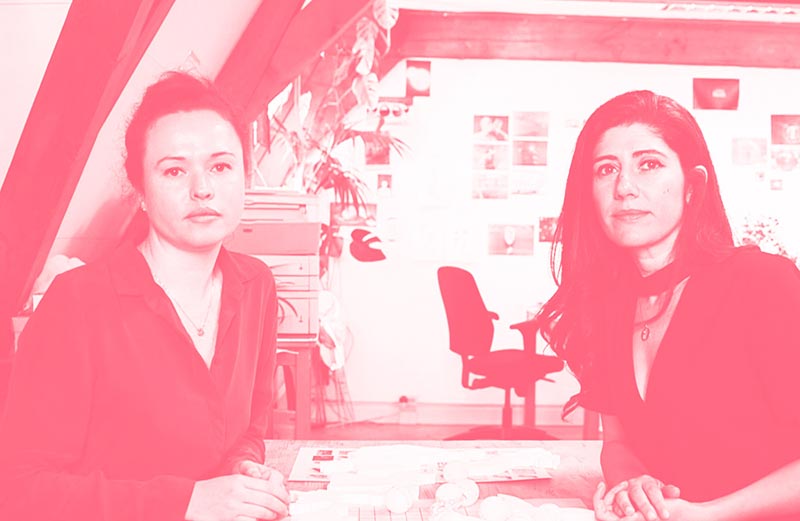
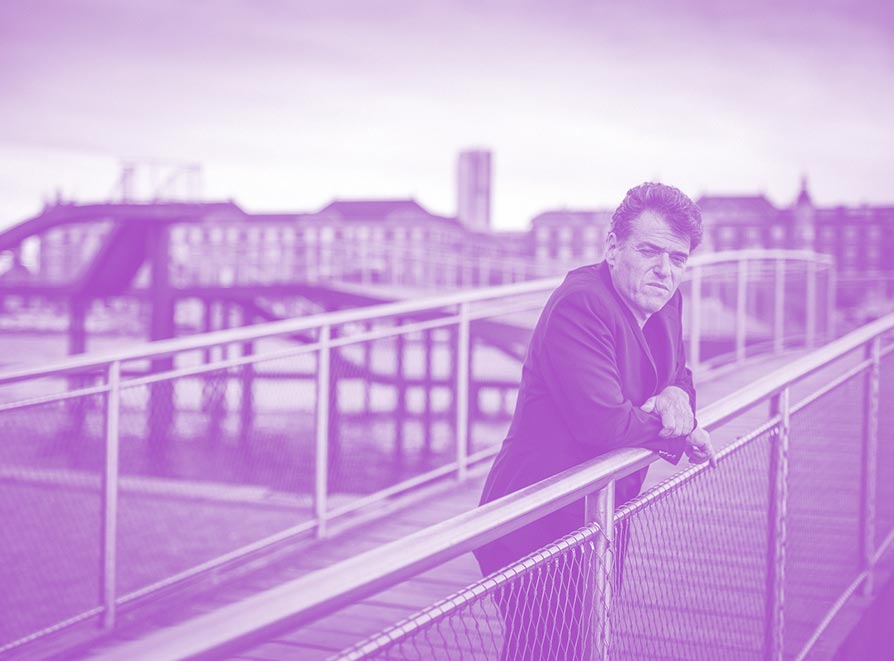
Andrew Keen is one of the world’s best known and controversial commentators on the digital revolution. He is the author of three books: Cult of the Amateur, Digital Vertigo and his current international hit The Internet Is Not The Answer which the London Sunday Times acclaimed as a "powerful, frightening read" and the Washington Post called "an enormously useful primer for those of us concerned that online life isn't as shiny as our digital avatars would like us to believe".
He is executive director of the Silicon Valley salon–style event, FutureCast, the host of the popular Internet chat show “Keen On”, a Senior Fellow at CALinnovates, a columnist for CNN and a much acclaimed public speaker around the world.
In 2015, he was named by GQ magazine in their list of the "100 Most Connected Men”.
Marquise is the Founder and Principal of Openbox. As a business designer and developer for more than two decades, he grounds the Openbox vision in strategic planning from the fields of investing, product development, and technology. Marquise also works in creative leadership, teaching with the Kaospilots in Denmark and South Africa to help students learn by doing.
An active supporter of the arts, Marquise has collaborated with director Petter Ringbom on three short films and one feature–length movie, Shield and Spear (2014), about the rise of creative expression in post-apartheid South Africa. Marquise acts as a board member for the Lowline Underground Park, Center for Healthcare Innovation and board advisor for the Andrew Goodman Foundation and MoCADA, and he is a mentor to Geeks Without Bounds and the Girls & Boys Club. He is also a supporter of the Joyce Theater, Makeshift Magazine and MCA Denver for their ability to inspire exploration and empower creative cultures.
Marquise is passionate about the power of design, and has a boundless curiosity for life. You can find him riding his bike through the streets of Manhattan, doing his part to build a greener urban future.
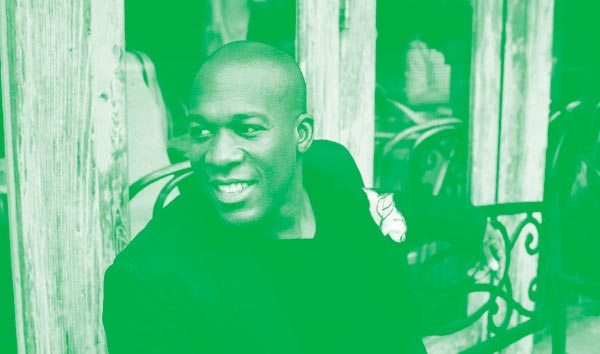
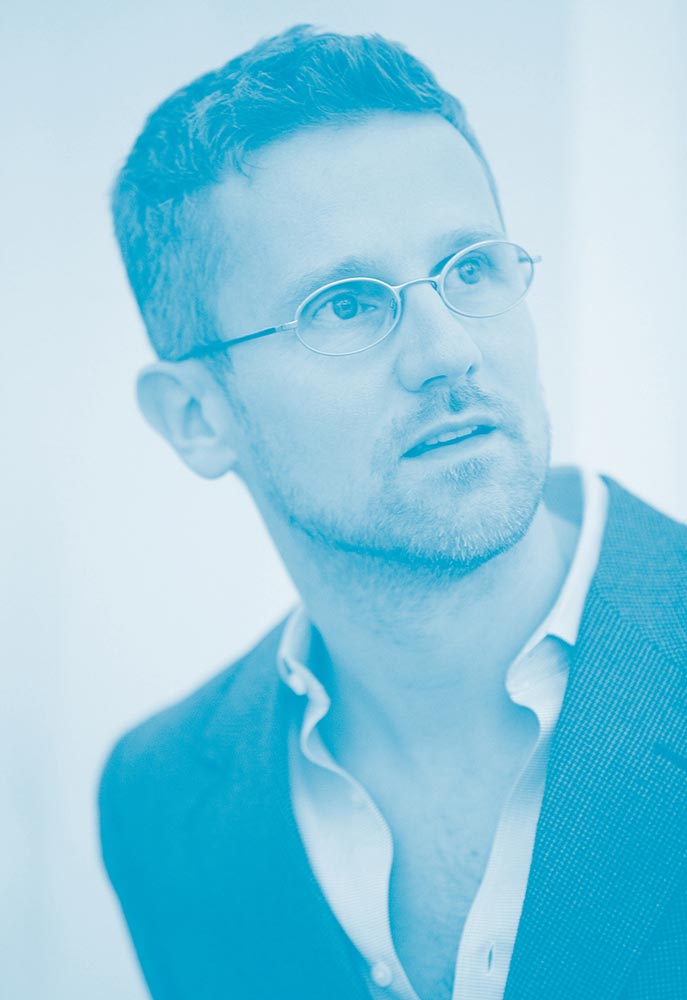
An architect and engineer by training, Carlo Ratti practices in Italy and teaches at Massachusetts Institute of Technology (MIT), where he directs the Senseable City Lab. Ratti has co–authored over 250 publications and holds several patents. His work has been exhibited in several venues worldwide, including the Venice Biennale, New York’s Museum of Modern Art (MoMA), London’s Science Museum, and Barcelona’s Design Museum. Two of his projects – the Digital Water Pavilion and the Copenhagen Wheel – were hailed by Time Magazine as ‘Best Inventions of the Year’. He has been included in Blueprint Magazine’s ‘25 People who will Change the World of Design’ and in Wired Magazine’s ‘Smart List: 50 people who will change the world’. He was curator for the ‘Future Food District’ at Expo Milano 2015, and is currently serving as Chair of the World Economic Forum Global Agenda Council on Future Cities.
Hasan Elahi is an artist working with issues in surveillance, privacy, migration, citizenship, technology, and the challenges of borders. His work has been presented in numerous exhibitions at venues such as SITE Santa Fe, Centre Georges Pompidou, Sundance Film Festival, and at the Venice Biennale. Elahi has spoken to audiences as diverse as the Tate Modern, American Association of Artificial Intelligence, International Association of Privacy Professionals, TED, World Economic Forum, and National Geographic. His work is frequently in the media and has appeared on Al Jazeera, Fox News, and on The Colbert Report. His work has been supported by grants from the Creative Capital Foundation, Art Matters, Doris Duke Foundation, and he is a 2016 Guggenheim Fellow. He has been Resident Faculty at Skowhegan School of Painting and Sculpture and is currently Associate Professor of Art at University of Maryland.
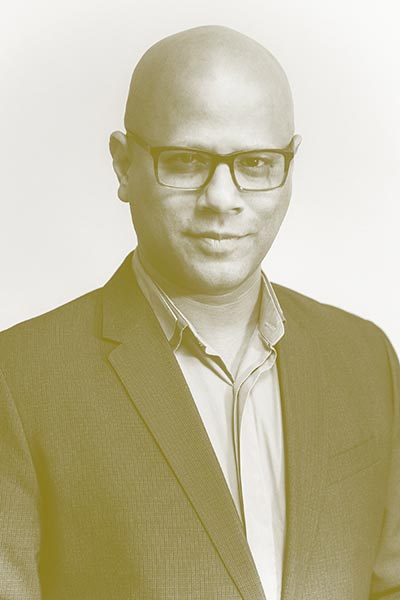
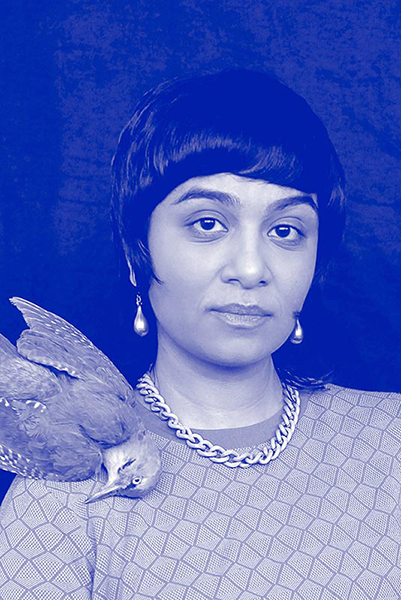
Monira Al Qadiri is a Kuwaiti visual artist born in Senegal and educated in Japan. In 2010, she received a Ph.D. in inter–media art from Tokyo University of the Arts, where her research was focused on the aesthetics of sadness in the Middle–East stemming from poetry, music, art and religious practices. Her work explores unconventional gender identities, petro–cultures and their possible futures, as well as the legacies of corruption.
Tina Kukielski is executive director of Art21, a nonprofit art organization specializing in digital media about contemporary art, and a curator and writer based in New York City. She has previously held curatorial positions at the Whitney Museum of American Art and the Carnegie Museum of Art, and has independently curated projects around the world. She was a co–curator of the acclaimed 2013 Carnegie International with Daniel Baumann and Dan Byers.
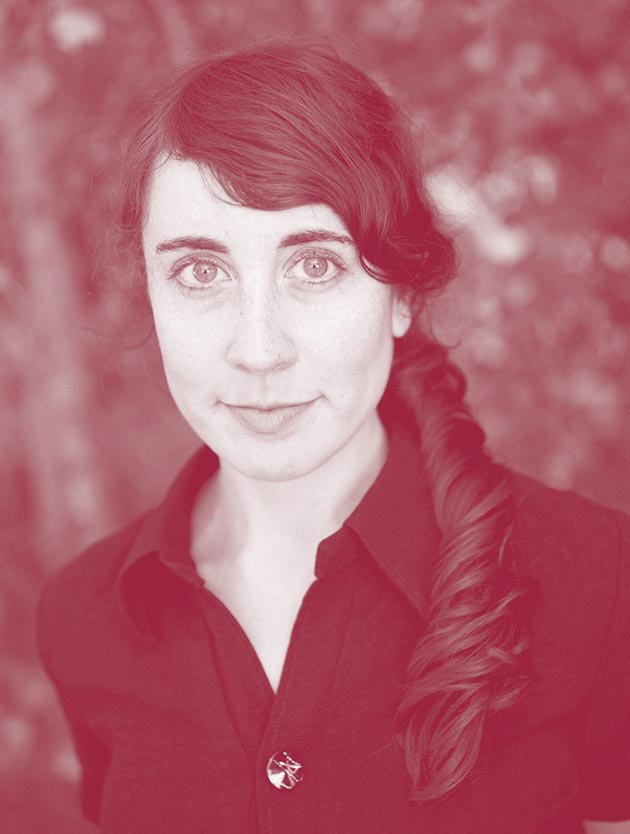
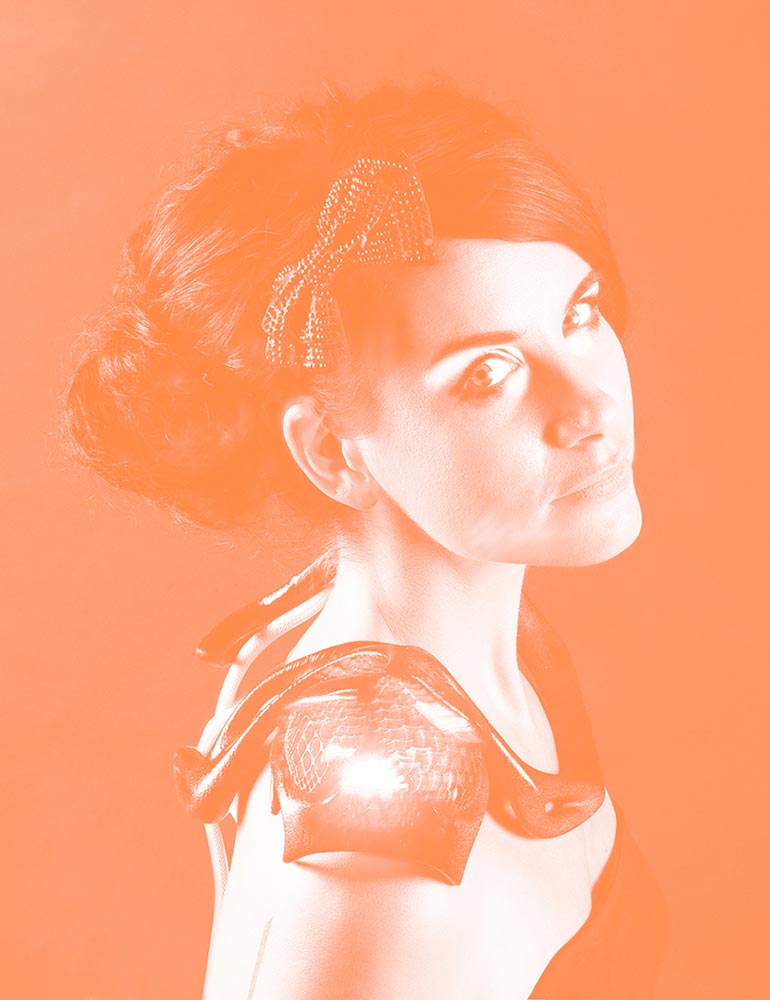
Dutch tech-minded fashion designer wants to make fashion ahead of her time, combining the latest in science and technology to make fashion an experience that transcends mere appearances. She wants her garments to facilitate and augment the interactions we have with ourselves and our surroundings. Her Spider Dress is a perfect example of this aesthetic, where sensors and moveable arms on the dress help to create a more defined boundary of personal space while employing a fierce style. Partnering up with companies such as Intel, AutoDesk, Google, Microsoft, Cirque Du Soleil, Audi, and 3D printing company Materialise she researches how our future would look as we continue to embed technology into what we wear.
Sophia Al-Maria lives in London where she currently writes screenplays for British film and television. Her first book The Girl Who Fell to Earth was published in 2012 and has been translated into Arabic. Douglas Coupland said of it, “This book could easily alter the way you see the early twenty–first century.” She is credited with coining the term Gulf Futurism and science fiction is her homeland. In 2016 she presented a solo show at the Whitney Museum in New York called Black Friday. Shot in nighttime shopping malls in Qatar – it was very loud and very scary.
sophiaalmaria.wordpress.com
thethirdline.com/artists/sophia-al-maria/selected-work
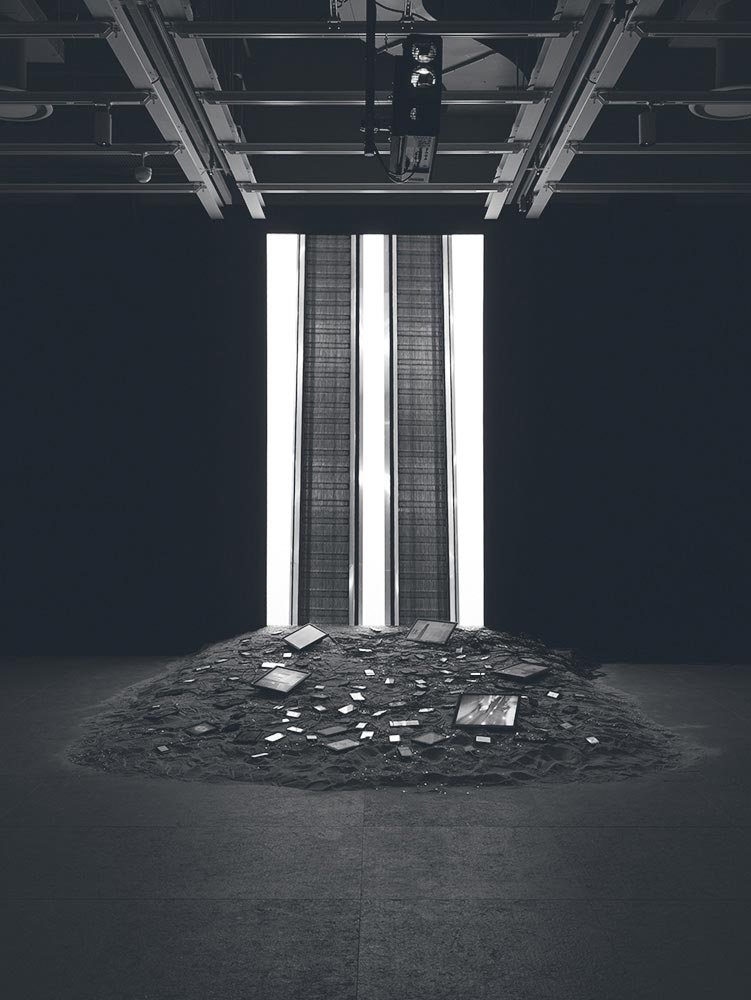
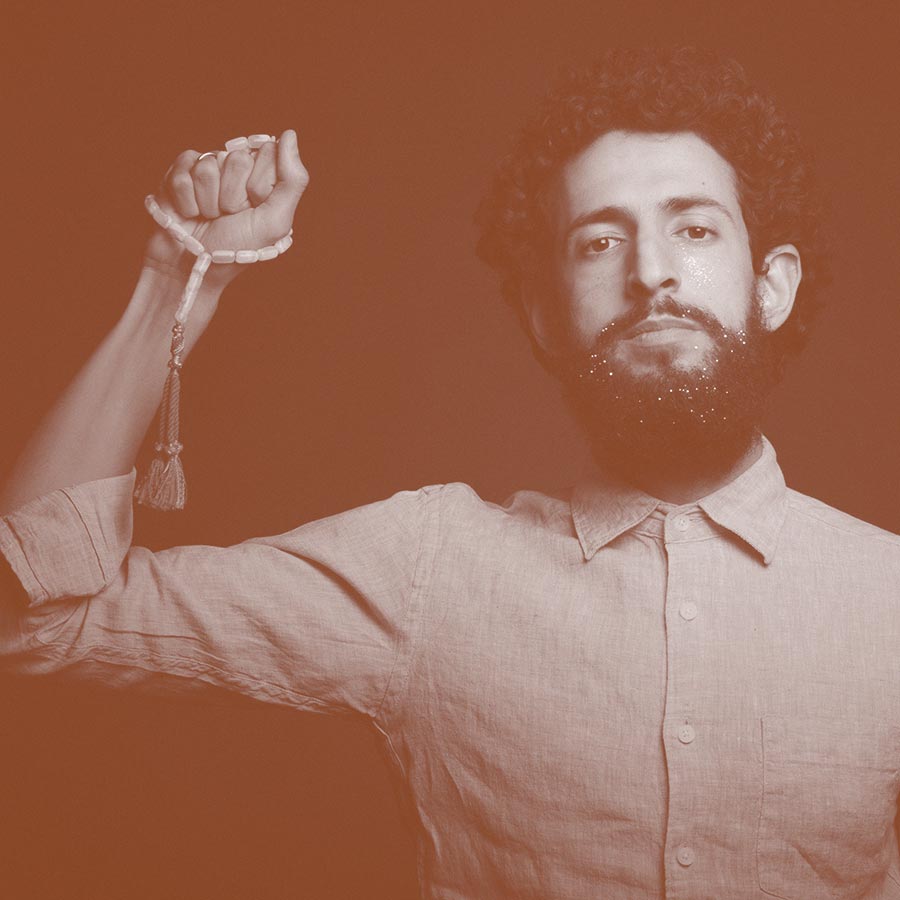
Actor, comedian, writer from Jeddah, Saudi Arabia, Fageeh is the co≠producer and star of Saudi Arabia’s submission to the Oscars for 2016’s Best Foreign Film¨ “Barakah Meets Barakah”. Most known for his 2013 viral video “No Woman No Drive¨ Hisham started performing stand–up while working on Capitol Hill in Washington DC.
During his Master’s at Columbia University he studied improvisational comedy at the Upright Citizens Brigade Theater (UCBT). Also while procrastinating he started a web series اسبوعیات هشام Translated Hisham’s Weeklies which propelled him into an Arabic Stand–up scene in the Kingdom of Saudi Arabia where he now resides. Follow him all over the social medias @HishamFageeh please.
@khalidalbaih is a Sudanese artist and political cartoonist that was born in Bucharest, Romania in 1980. He currently lives and works in Doha, Qatar, where he has been based since 1990. He publishes his cartoons on social media under “Khartoon!,” a word play on cartoon and Khartoum, the capital of Sudan. Albaih has published his cartoons widely in international publications including The Atlantic, PRI, andNPR, in addition to his published written social and political commentary in publications such as The Guardian and Al Jazeera. His work has been exhibited in group exhibitions including "The Khartoum School" and “do it [in Arabic]” (Sharjah, 2016) and “RE:BELLION // RE:LIGION // RE:FORM - Artistic Action in Times of Crisis” (Zwickau, Germany, 2015) as well as solo exhibitions at Virgina Commonwealth University ( Doha, Qatar, 2016), 1After360 Gallery (New Delhi, India, 2016), the Arab American National Museum (Dearborn, MI, 2015), McGill University Montreal, 2014), and Edge of Arabia (London, 2013).
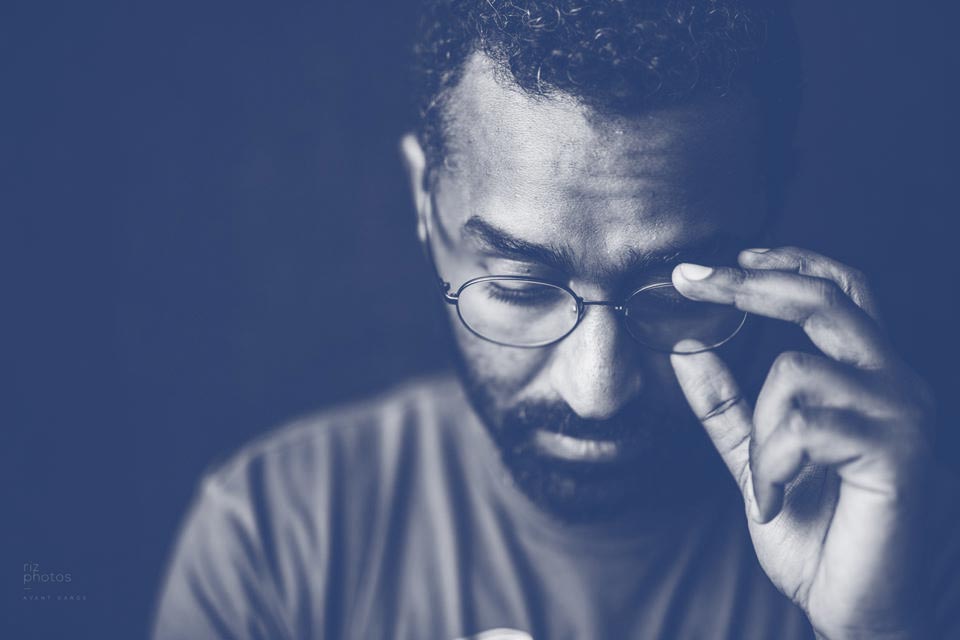
In Transit explores the intersection between the analogue and digital realms of our creative practices within the context of our lived experiences. The artists and designers selected for this mobile exhibition examine where these modes of creativity, intertwine, and coexist. In Transit creates a context for further examining the relevance of our current attitudes and offers new ways to grow and evolve creative expression in times of rapid change and displacement.
We hear the static murmur of this change all around us, yet we often ignore it. In doing so we risk irrelevance and obsolescence as creative beings. We need to bring our awareness of this change to the foreground by reviewing and analyzing our current behaviors and attitudes. We must gain new knowledge, new experiences, make adjustments and adapt. As artists, designers, and as human beings we are co-creators of our societal platforms, and we affect how they evolve as we evolve along with them.
These bold young artists and designers are leading the way into this new territory. They will be the practitioners who create and embrace this radical change, as they continue to innovate, and create new technologies, methods and philosophies. They are our audience and simultaneously our teachers.
Students who worked on the project:
Amal Al Kuwari, Sarah Al–Afifi, Ebtesam Al–Hothi, Buthaina Al–Qaisi, Almaha Al–Sulaiti, Kamla Al–Sulaiti, Latifa Alkuwari, Aaqifa Altaf, Sarah Aweida, Noor Bahzad, Sarah Elawad, Nimrah Kabiruddin, Faheem Khan, Reham Ahmed, Samia Al Derbesti, Noor Al–Emadi, Alanoud Al–Khater, Hend Al–Kuwari, Maryam Al–Mudahka, Maha Al–Sulaiti, Hissa Albaker, Wadha Alhassan, Carlotta Bernardi, Gajin Chung, Yeon G. Hwang, Jumyoung Lee
form(force) is an exhibition of works drawn from VCU’s campuses in Richmond and Doha. Through a wide variety of media, including painting, sculpture, design, craft, and installation, form(force) explores ways in which artists navigate relationships and tensions between embodied and virtual realities. The selection of works evokes a circle of mimicry, in which organic forms are patterned after technological ones, and where technological forms emulate lived experiences in the natural world.
Larson Shindelman collaboratively investigate the data tracks we amass through networked communication. Their work ties the invisible to actual sites, anchoring the ephemeral in photographs and immersive video installations. Their most well–known project, Geolocation, traces Twitter posts to the point of origin and makes a photograph to mark the location in the real world, illuminating the invisible layer of data that surrounds us and probing the expectations of privacy surrounding social networks.
The first phase of Geolocation (2009 – 2016) took them across the US, from New York to Los Angeles, as well as to Canada and England. The second phase, #Gratitude (2016 – ), took them to Saint Petersburg and Moscow in Russia, where they began investigating the way hashtags to create a gathering point for national identities.
For Tasmeem Doha 2017, they will photograph sites geotagged by Tweets with the the Arabic hashtag قول_كلمة_لقطر#, or “say a word for Qatar.” During the workshop, they will share their photographs made before the start of the conference and also invite conference attendees to participate by choosing a site to photograph and contribute to the project.
Nate Larson and Marni Shindelman have shared a collaborative artist practice for the last ten years. Numerous publications have featured their work including Wired, The Picture Show from NPR, the New York Times, and the British Journal of Photography. They recently created site–specific public artworks for the Atlanta Celebrates Photography Public Art Commission, the Indianapolis International Airport, and the DUMBO Business Improvement District. Their work is in the permanent collection of Crystal Bridges Museum of American Art, the High Museum in Atlanta, Georgia, the Orlando Museum of Art, Museum of Fine Arts Houston, the Robert Rauschenberg Foundation, and the Portland Art Museum. Flash Powder Projects released their first monograph in January 2016.
Larson is faculty in the photography department at the Maryland Institute College of Art (MICA) in Baltimore. Shindelman is an assistant professor of art at the University of Georgia, where she chairs the photography and graphic design areas.
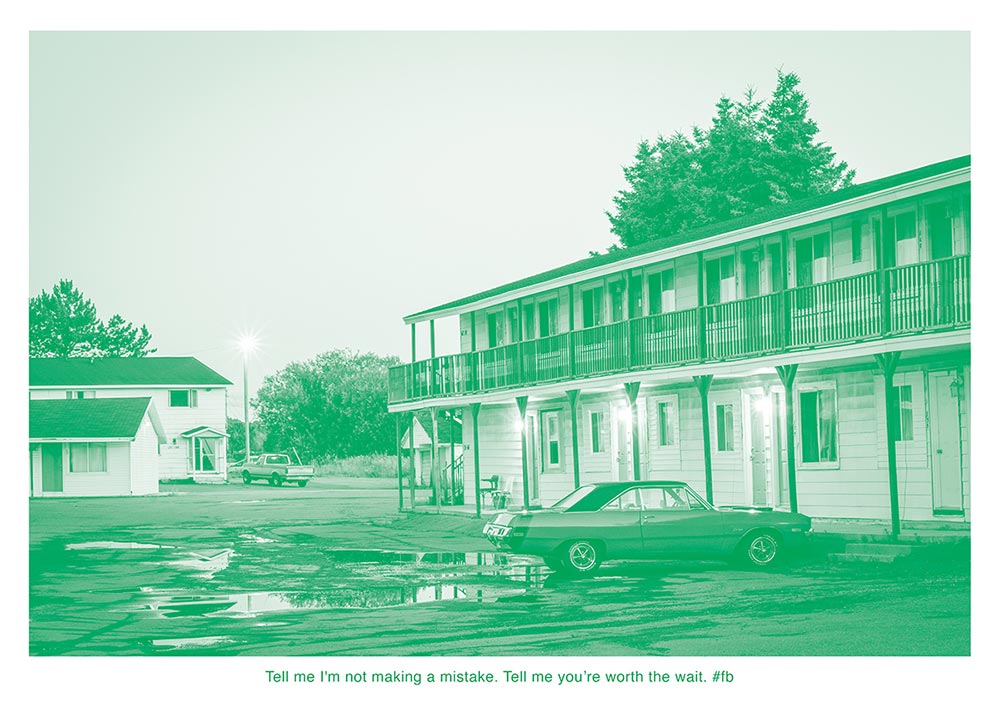
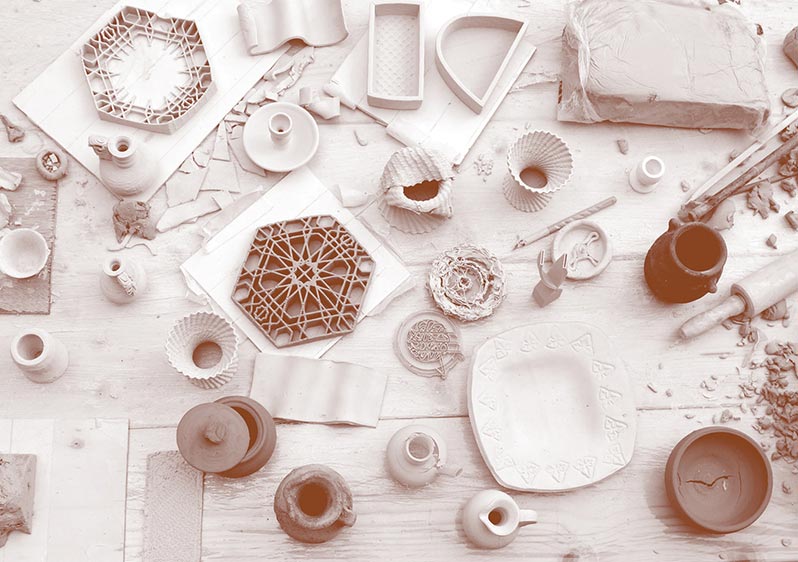
In celebration of the Qatar Germany Year of Culture 2017, Tasmeem Doha,
the German Embassy Doha and the Goethe–Institut Gulf Region are proud to present:
3D Ceramic Printing is a show and Tell Workshop. This open project will show the artistic possibilities of 3D printing with ceramic materials within an analog-digital design process. Objects will be digitized with a 3D Scanner, reworked and redesigned, within Blender Software. The resulting digital models later gets printed in porcelain material. This is a quick process in an open lab atmosphere. Students can stop by and have their objects interpreted in ceramics. The end result is to have the objects dry before they are launched.
EYESECT is a wearable interactive constellation, reflecting an ‘Out–of–Bodiment’ in an immersive way. This allows users to experience their environments from new points of view. The world, as we perceive in reality and through media, is aligned to binocular and stereoscopic vision of human beings. These omnipresent, human–centristic perspectives and the critical debate about contemporary 3D Technology simulates not only real space, but also the desire for new visual ways.
Two handheld cameras capture the surroundings and stream the image data straight to the single eyes. The spatial perception is then constructed inside the human sensory system. Arms and fingers become eye–muscles and create impossible human-biological perspectives. External world will be designed in a new way and EYESECT critically requests the users with his or her visual/spatial customs and technologically augmented individualism.
The helmet device has an amorphic, broken and metal–coated surface. The eyes, in many cultures treasure of the soul are not where they are supposed to be. Users of the EYESECT look different in both meanings. They experience space in a complete new visual manner and external beholders are not able to catch mimic, or any facial expressions. What’s seen is a distorted reflection of themselves in their own environment. And that´s just a slight idea of what happens inside the helmet. EYESECT will be available at The Constitute area for everyone to experience.
The SMSlingshot is an autonomous working device, equipped with an ultra–high frequency radio, hacked arduino board, laser and batteries. Text messages can be typed on a phone–sized wooden keypad which is integrated in the also wooden slingshot. After the message is finished, the user can aim on a facade and send/shoot the message straight to the targeted point. It will then appear as a colored splash with the message written within. The people can choose their preferred language setting: arabic or english. A colorful wall results, full of statements, critique, humour and position. A base for further face to face discussions.
The Constitute is a design, art and research studio based in Berlin and run by Christian Zöllner and Sebastian Piatza. By combining artistic and scientific practices they create interactive experiences for the public space. Founded in early 2012, emerging from the VR/urban media art collective, The Constitute worked with several international cultural Institutions, commercial clients and a professional network to exhibit their works worldwide. The current focus is on Design – Fiction, Art + Science, experimental Rapid Prototyping, Design for social change and New Media Art. The Constitute is actively working in the fields of academic teaching at various universities worldwide.
Sebastian Piatza is a product designer with a focus on intermedial and scientific work. Sebastian has been awarded numerous times for his works on neurological, social and optical design studies. In addition to his design focused work, he holds workshops on design technique and plays and tours successfully as an electronic DJ. He has been running the berlin-based design company, THE CONSTITUTE since 2012, where he is responsible for prototyping, project organisation, conceptual work and all financial business relations.
Christian Zöllner comes from a product design background and is constantly moving towards interaction design, design research and design teaching. He has worked in design studios in Paris and Vienna. He has taught at the Rietveld Academy Amsterdam, Muthesius Kunsthochschule Kiel and at the University of the Arts in Berlin where he hosted projects on experimental product development for more than six years. In 2014 he was an invited guest professor for Design Fictions at the University of Art and Design Burg Giebichenstein in Halle, Germany. He also gives workshops, courses, talks and lectures worldwide on topics such as science fiction, spatial strategies and design in detail and overall.
This workshop is an introduction to the 19th century wet plate collodion process. Students will learn how to create tintypes in camera. Tintypes are made almost instantaneously through a process that uses hand poured chemicals on an enameled sheet of metal. In addition to demonstrating the process, the workshop leaders will discuss the importance of maintaining the relevancy of analog photography in the digital world.
Penumbra: ORIGIN mid 17th cent.: modern Latin, from Latin paene ‘almost’ + umbra ‘shadow.’
Penumbra Foundation is a non profit organization that brings together the Art and Science of Photography through education, research, outreach, public and residency programs. penumbrafoundation.org
Jolene Lupo is as photographer based in New York City. After receiving her BFA in Photography at the Fashion Institute of Technology, she went on to practice historic photographic processes. Her work focuses on points of intersection between life, death, memory and loss. She currently holds the position of Tintype Studio Manager at Penumbra Foundation.
jolenelupo.com
Geoffrey Berliner is co-developer and the Executive Director of Penumbra Foundation. A native New Yorker who was introduced to photography at an early age, his father was an artist, photographer and a public school teacher in New York City. His grandfather graduated from Cooper Union and went on to work for the New York Times as a photographer and photo retoucher. After leaving Harvard University with a Masters degree in religion, Geoffrey left academia to start his own business. After several years, the call of photography and especially large format and alternative photographic processes urged greater involvement in these practices.
www.instagram.com/geoffreyberliner
Steven Arcella is an artist and designer whose work spans multiple disciplines and media. Steven holds a BFA degree from The Cooper Union. He is the recipient of the AIGA Fifty Books award, as well as The Type Directors Club International Excellence in Type Design Award.
Steven's work revolves around an exploration and re–interpretation of natural forms and phenomena. His photographic work explores perceptions of time and memory.
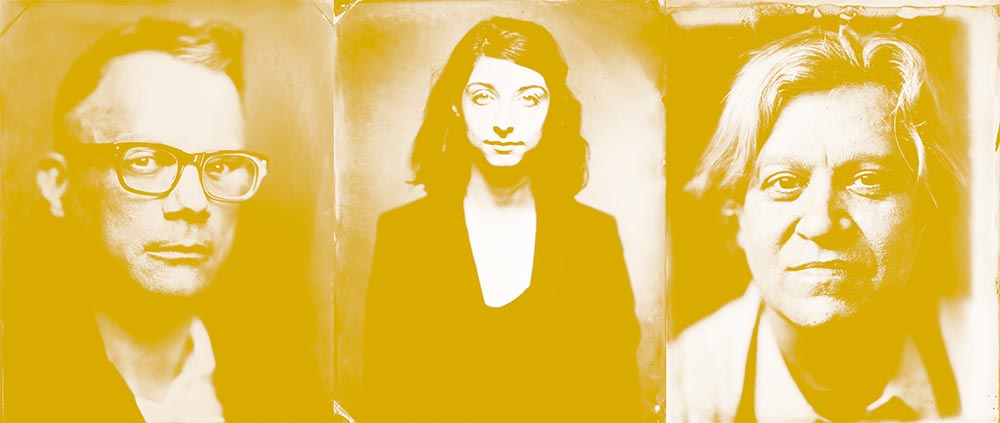
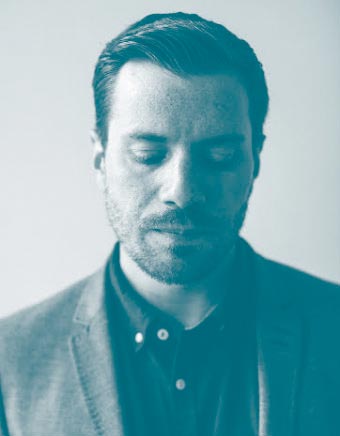
Pressure to Be Someone is a generative, evolving, participatory audio installation. The installation selects and mixes from an assortment of stories, music, and environmental audio using a randomized computer algorithm, meaning it could run for weeks before repeating itself. PTBS is accompanied by a seminar on field recording and interview techniques. Attendees will contribute to the PTBS library.
Nick van der Kolk is a radio producer, sound designer, events organizer, and the host and creator of the critically acclaimed Love + Radio podcast. His work has appeared on This American Life, The New York Times, Snap Judgment, Marketplace, and numerous radio outlets worldwide. He is also the co-founder of Megapolis – an audio art and leftfield radio festival. His media career began in 2001 as a DJ and later station manager of his college’s 5–watt, student–run station (slogan: “Stations with listeners have sold out”). He has won multiple awards from the Third Coast International Audio Festival, and is a 2012 USA Artists Collins Fellow.
mOb arrives in Doha to explore ideas of place–making and community in a disruptive and collaborative co–occupation of the Tasmeem Conference. MoB will focus on the majlis and everything from pattern to structure will be designed in tandem with MoB Richmond. Workshop attendees will employ non–traditional methods of construction and communication between MoB Richmond and Doha to create a pair of majlis sets which will serve as sites and stages.
MoB+Storefront operates on the belief that good design makes a healthier city where citizens participate more serendipitously in their environment, their government and their culture. MoB is a partnership of three design departments of VCUarts, Graphic Design, Fashion Design and Interior Design. These departments operate an innovative design lab that realizes the potential of design to shape the City.
Adele Ball, ring leader, story teller, inventor; knows a lot about good thrifting; bright graphic designer, especially when riding her bike in a bright and shiny helmet!
Drew Sisk, historical candy enthusiast, who has a pet rock Pebbles; has great patterned clothing, knows nothing about snow
Talia Levinas, advocate, organizer, peace maker; daughter of an architect, friendly and caring graphic designer that always has ideas on how to bring the whole studio together, and share homemade food
Maxim Belyaev, optimist, experimenter, craftsman is down to hike if you are; knows everything about snow
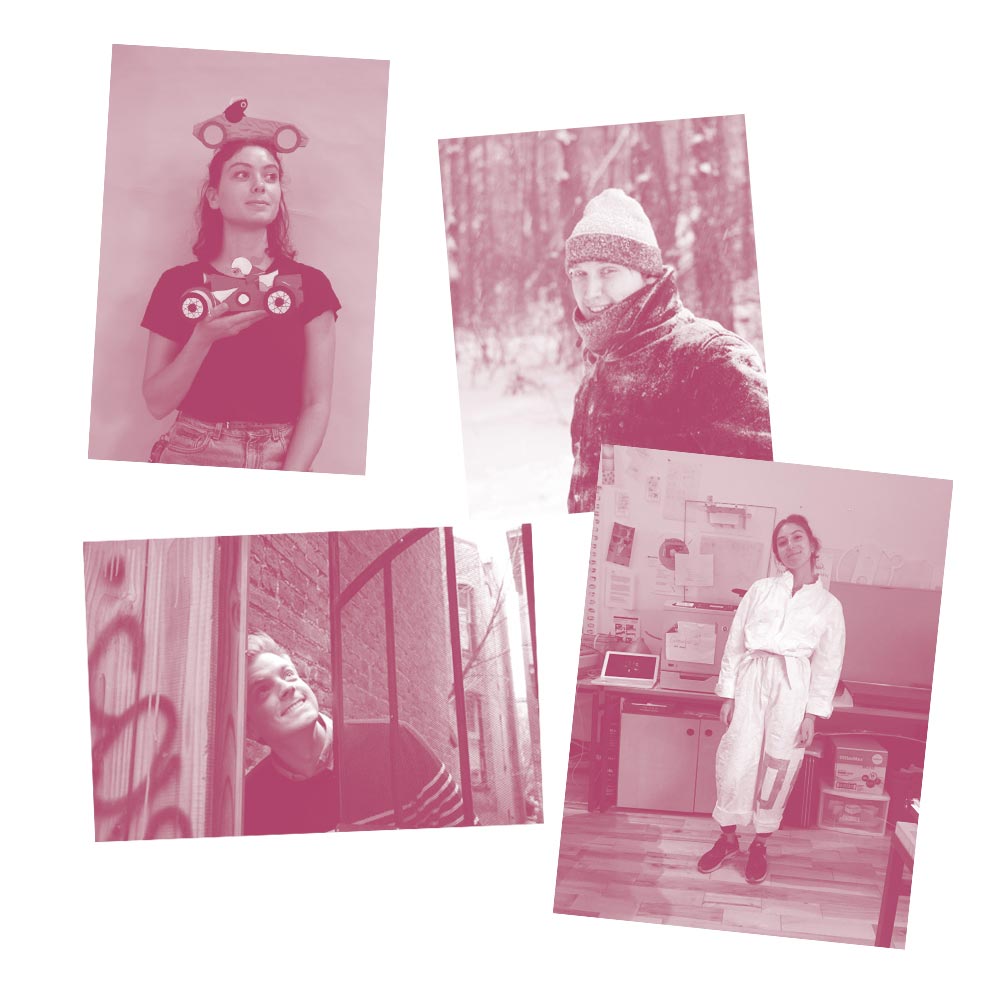
Inspired by North Korean Arirang Mass Games, Mass Pointillism is a collaborative workshop aimed to produce the largest peg–elated image in the world: a 2x2.6 meters artwork done using 307.200 2–mm pegs. Each participant will fill one of the 256 plastic boards with “chiodini” (small nails in Italian) made only of 6 colors (white, yellow, red, green, blue, black) and will contribute to generate a large iconic image that will be revealed only at the end of the Tasmeem conference. The aim of the workshop is to playfully explore the production of a digital image through an entirely analog process.
Pixel Art is a composition game developed by Arcastudio, a Torino design agency. It is based on the famous Quercetti pegs, a 70 years old toy, that has been turned into a low definition six colors analogue screen, used to produce portraits with a photorealistic effect. Pixel Art is based on the Pointillist painting technique where minimal units of primary colors were placed next to each other in order to recreate, when observed by a certain distance, the full colors pallette.
Pixel Art is a very successful toy produced and commercialized by Quercetti, Torino.
“What Happens To Art After The Internet? – New Media Art Between Technological Content And Classic Techniques”
Daniel Becker M.A.
“Interactive Matter: Expanded Perception Between The Analogue And The Digital”
David Simon–Vermot
“Ryan Trecartin”
Emily Watlington
“Reset The Apparatus! Retrograde Technicity In Artistic Photographic And Cinematic Practices"
Edgar Lissel,
Mag. NinaJukic,
Prof. Mag. Dr. Gabriele Jutz
“Building Information Modeling (BIM) In Design Pedagogy. Effervescence Between Analog & Digital Approaches”
Haithem El–Hammali, Ph.D.
“Ellipses And Presence: Omission, Absence And Resemblance In The Narrative Of The Virtual”
Law Alsobrook
“Hands–On/Hands–Off: Digital And Analog Engagements With Building”
Leslie Forehand, Thomas Leslie
“Potential And Matter: A Virtual–Analogue Architectural Adventure”
Marta Jecu
“Rethinking Lived Experiences In The Emergent Socio–Techno Geographies: A Design Tool For Architects”
Dr. Lakshmi Priya Rajendran
“Interdisciplinary Arts And Sciences: Producing New Forms Of Knowledge In Miao Xiaochun’s 3D Environments 1”
Isabel Seliger, PhD
“The Digital Postponement Of Death”
Tanja Wiehn
“But What Does It Say? : Privileging Visual Imagery In The Digitization Of Arabic And Islamic Manuscripts”
Sumayya Ahmed, PhD